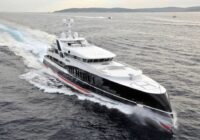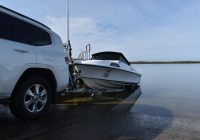By John Hogan, Director Marine Structures
Marinas were once designed by talented engineers and seasoned sailors using flat 2D drawings and guided by AS3962, Australia’s standard for marina design. Today, however, the marine infrastructure sector is undergoing a remarkable transformation. Advanced marina design has sailed far beyond conventional blueprints, embracing cutting-edge digital tools and sustainable practices to create more resilient, efficient, and environmentally conscious waterfront developments.
![]()
Traditionally, AS3962 served as the guiding framework for marina planners, addressing everything from wave climate to berth configurations. While it remains a foundational document, its static guidelines are now being reinterpreted and expanded through modern digital methodologies. Designers are turning to Building Information Modelling (BIM), 3D simulations, and Geographic Information Systems (GIS) to envision and execute complex marina environments with unprecedented precision.
These technologies allow for dynamic modelling of tidal flows, wave interaction, and vessel traffic, enabling engineers to optimise layouts in real time and under varied climatic scenarios. For instance, 3D hydrodynamic simulations help identify optimal breakwater placements or dock orientations, reducing sediment build-up and ensuring year-round operability. Augmented Reality (AR) is also making its mark, offering stakeholders immersive experiences of proposed developments well before construction begins.
Once the designers have the data, the same information can be used in digital manufacturing. Suppliers are increasing the use of robotic welding and 3D laser cutting to fabricate custom aluminium or stainless-steel marina components—such as cleats, brackets, frames, and gangways.
These elements are often highly customised to fit unique site geometries or loading conditions. Instead of being cut and assembled manually, engineers now use CAD (Computer-Aided Design) files directly in conjunction with CAM (Computer-Aided Manufacturing) software to drive robotic systems. These systems can perform precise, repeatable cuts and welds, reducing human error and allowing faster production with high consistency.
An example is Seaflex anchoring systems, which often involve precision-manufactured elastic moorings and attachment assemblies. These are digitally designed and manufactured tosuit exact seabed profiles and wave conditions, ensuring minimal ecological disturbance and maximum longevity.
Moreover, these digital design tools are increasingly being integrated into the manufacturing and fabrication process. For example, marina components such as pontoons, piling guides, and gangways are now being modelled in 3D environments and then manufactured using CNC (Computer Numerical Control) machining or modular fabrication methods. This integration ensures precision, reduces waste, and allows prefabrication, accelerating construction timelines.
The smart marina revolution
Digitisation is enabling smarter marina management post construction. IoT-enabled systems can monitor dock usage, energy consumption, and weather conditions, allowing marina operators to make informed, real-time decisions. Combined with data analytics, this leads to enhanced safety, operational efficiency, and long-term cost savings.
IoT stands for the Internet of Things. It refers to a network of physical devices—like sensors, machines, vehicles, appliances, or even entire buildings that are connected to the internet and can collect, share, and act on data.
![]()
In the context of marina design, IoT devices might include:
- Smart sensors on docks to monitor occupancy, movement, or
structural integrity - Weather stations to track wind, tide, and temperature in real time
- Energy meters that track power and water usage per berth
- Security cameras and access systems that integrate into a central
control panel - Remote-controlled lighting or charging systems that respond to
usage or schedules
All of these devices can be managed remotely and used to make data-driven decisions, improving efficiency, safety, and sustainability.
Green infrastructure takes the helm
Sustainability has become another key driver of innovation. The new era of marina design emphasises eco-engineering—integrating green infrastructure like floating wetlands, fish habitats, and low impact anchoring systems. Solar-powered lighting, water recycling stations, and electric vessel charging points are now standard in many forward-thinking marinas. These innovations not only reduce environmental impact but also align with global marine conservation goals and appeal to a growing eco-conscious boating community.
In short, marina design is no longer just about accommodating boats—it’s about crafting future-ready waterfronts that harmonise technology, environment, and community needs. As standards like AS3962 evolve to reflect this digital and ecological shift, the industry stands on the brink of a smarter, greener maritime future.
The next generation of marinas won’t just float—they’ll think, adapt, and sustain.

John Hogan is the Director of Marine Structures, a company formed through the merger of Superior Jetties and The Jetty Specialist Groups. Headquartered in Southeast Queensland, Marine Structures has become Australia’s leading provider of marina infrastructure. With manufacturing facilities on both the Sunshine Coast and the Gold Coast, the company has been serving the market for over 35 years, producing and installing a wide range of marine berthing systems across Australia and exporting through an international dealer network.
John served as Chairman of the Global Marina Institute from 2016 to 2019 and has been a Board Member of the Marina Industries Association since 2004.
This story originally appeared in the Marine Industries Association Waterline Magazine and has been reproduced with their permission.







